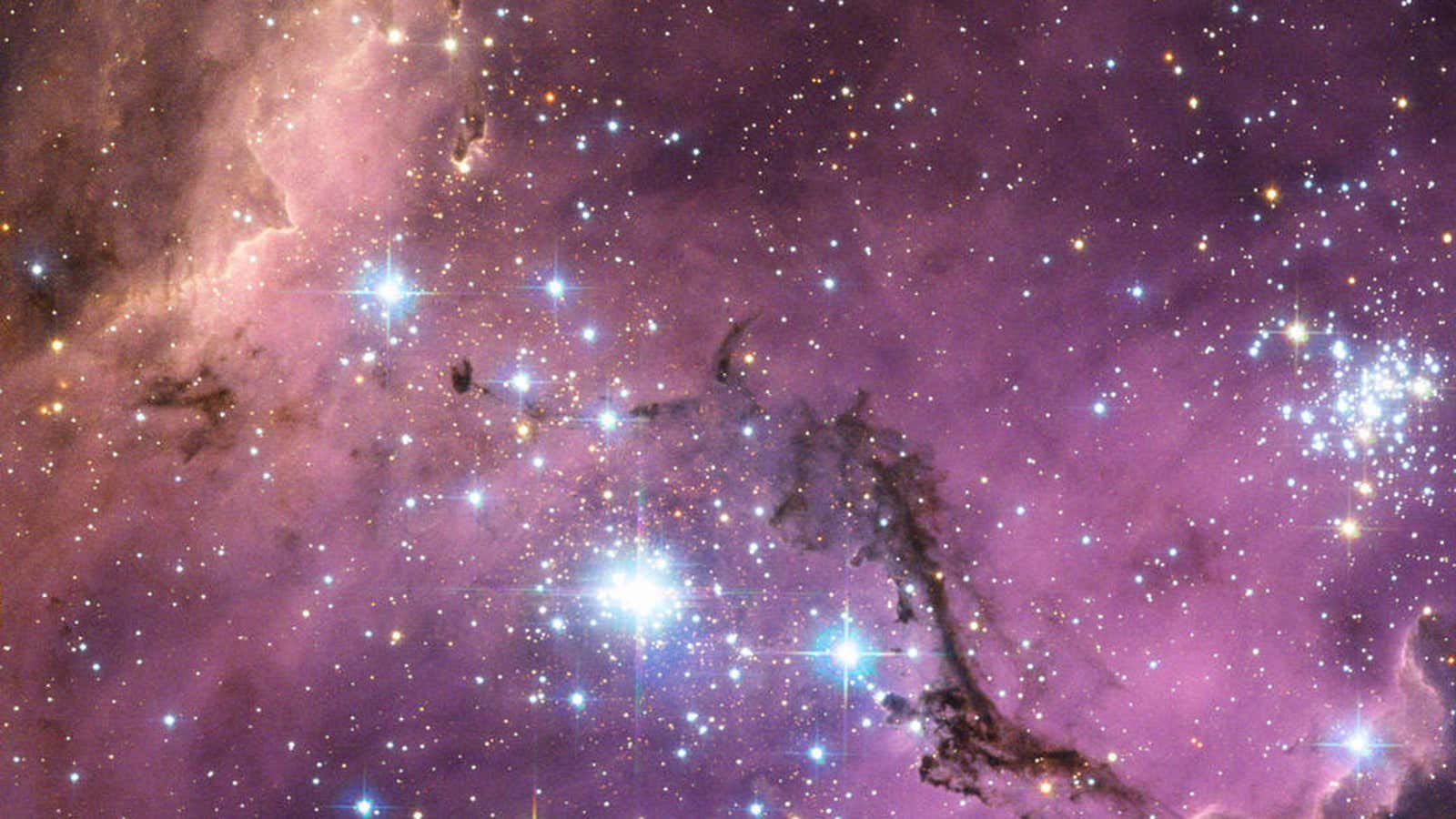The Milky Way is on a crash course with one of its closest neighbors, a spiral of dust and stars known as the Large Magellanic Cloud (LMC). Right now, the LMC orbits our galaxy at a safe distance of about 200,000 lightyears. But about 2 billion years from now, scientists from Durham University predict the two celestial bodies will collide.
And the view from Earth will be spectacular.
As the Milky Way absorbs its smaller neighbor, the black hole at the center of our galaxy will gobble up gas clouds and stars from the LMC. All that new mass would inflate the black hole to 8 times its current size, and might even turn it into a quasar—one of the brightest objects in the universe.
In a statement, co-author Carlos Frenk predicted “a spectacular display of cosmic fireworks as the newly awakened supermassive black hole at the centre of our galaxy reacts by emitting jets of extremely bright energetic radiation.”
In fact, quasars spew light 10 to 100,000 times brighter than the entire Milky Way galaxy, which would make a shiny new addition to the night sky. But the most dramatic effect would be the way the quasar rearranges our galactic geography.
Some stars will be sucked into oblivion, while others will be flung quadrillions of miles out of orbit. There’s even an off-chance that our own solar system will be among the exiles ejected from the galaxy, dragging the Earth with it. That would wipe all our known constellations out of the sky, as our familiar stars drift too far away for earthlings to see with the naked eye. (Every one of the 9,096 stars we can currently see lie within the Milky Way.)
But fear not: the researchers say it’s very unlikely that this event will put life on Earth at risk. Lead author Marius Cautun said the quasar’s radiation won’t affect our solar system, and there’s only a small chance our sun will get knocked out of the galaxy. If all goes well, our distant descendants will be free to sit back and enjoy the show.
